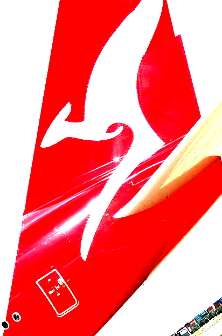Qantas comes last in CO2 count
 A new study says Qantas is the worst major airline when it comes to fuel efficiency and carbon emissions in trans-Pacific flights.
A new study says Qantas is the worst major airline when it comes to fuel efficiency and carbon emissions in trans-Pacific flights.
The International Council on Clean Transportation (ICCT) has reviewed fuel emissions figures of 20 major airlines.
Qantas placed last, burning on average 64 per cent more fuel per passenger-kilometre than the top ranked airlines – China’s Hainan and Japan’s ANA.
Virgin Australia ranked sixth - just 6 per cent below the top performers.
The ICCT found Hainan and ANA moved 36 people 1km for every litre of fuel consumed, while Virgin Australia moved 33 and Qantas 22 people.
The experts say Qantas's fuel efficiency suffers Pacific flights because it uses four-engine planes like the Boeing 747 and Airbus A380 for the route, which consume more and emit more than twin-engine planes.
The carrier was also found to fill an average of just 74 per cent of available seats, while others were more likely to have a full capacity.
Qantas has slammed the study as an inaccurate representation of its fuel efficiency.
“Our Sydney to Dallas route is one of the longest in the world, and ultra-long-haul flights have a magnifying effect on fuel burn because you're carrying a lot of weight [in the form of fuel] at the start of the journey in order to make the distance,” said Qantas’s head of fuel and environment, Alan Milne.
“Unlike other airlines in the study, Qantas offers first class and two other premium cabins on most of our trans-Pacific flights.”
Researchers Dr Dan Rutherford said the study was aimed at informing environment-conscious consumers.
“The average flyer has very little information about the carbon footprint or the environmental performance of airlines,” he said.
“There's a big gap in fuel efficiency on trans-Pacific flights, this leads to excess carbon emissions and we really hope that people start to think about this as they make their travel decisions.”
The global aviation industry’s carbon emissions make up about 2.5 per cent of the world's carbon pollution.








 Print
Print